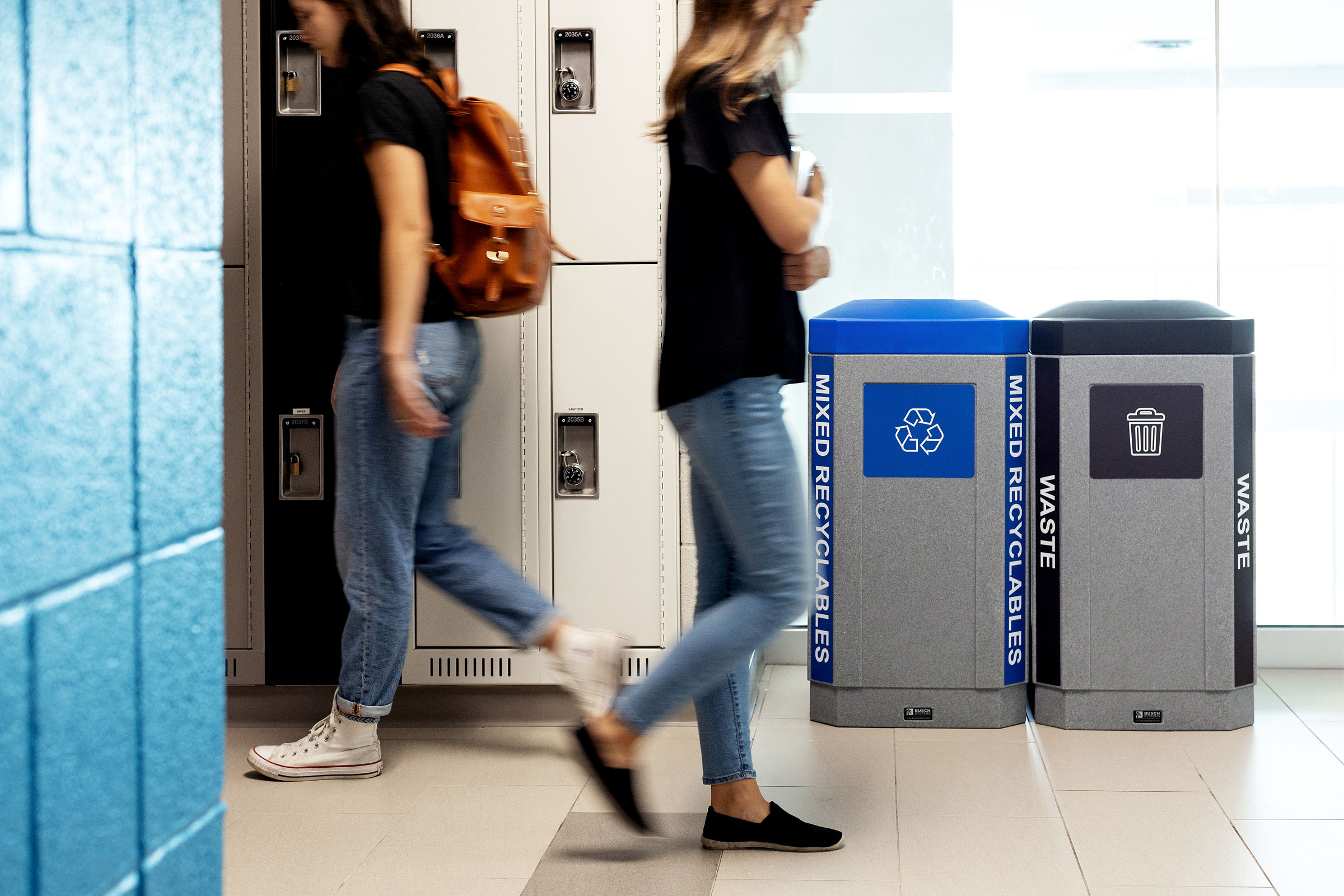Story at a glance:
- There are four basic types of recycling systems: mixed waste recycling, commingled recycling, dual stream recycling, and source separation.
- Mixed waste and commingled recycling systems are extremely convenient for users, but require much more post-collection sorting and typically produce lower quality recyclates.
- Dual stream and source separation recycling systems involve some level of sorting before collection and typically produce the purest recyclates.
The “take, make, and throw away” model of consumption is unsustainable, and the need for effective recycling systems is great.
This article is an introductory guide to the four basic types of recycling systems practiced around the world.
Why Do We Recycle?
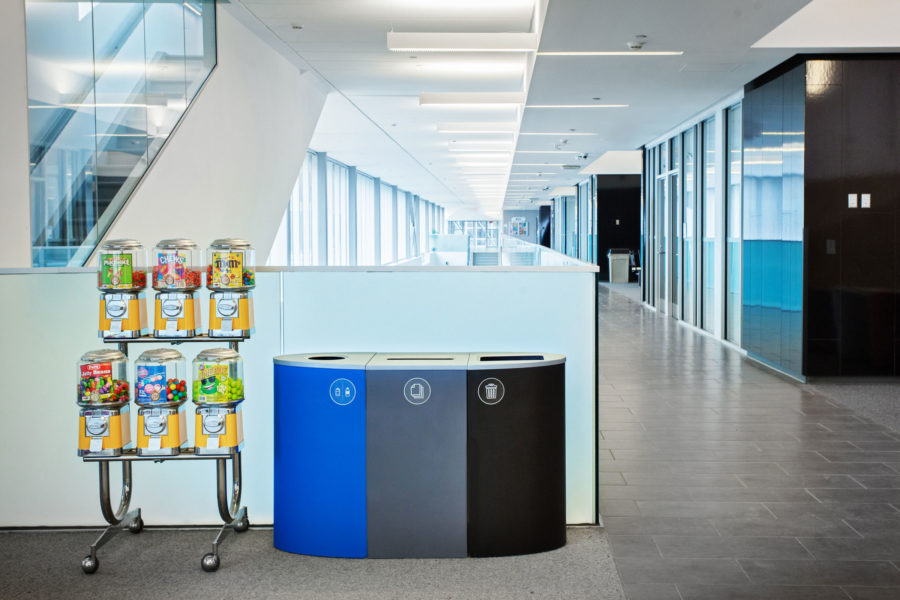
Recycling helps limit the extraction of new raw materials and reduces processing/manufacturing emissions. Photo courtesy of Busch Systems
Before we get into the different types of recycling systems, let’s take a brief moment to talk about the importance of recycling and how it contributes to environmental sustainability and a circular economy.
Recycling, like any practice that keeps materials in circulation after they’ve reached the end of their operational lifespan, reduces the need for new resource extraction, helping to conserve existing ecosystems and limit destructive processes like deforestation or strip mining. Reprocessing recycled materials for reuse in new products also requires less energy and produces fewer emissions than processing new materials, further reducing the environmental impact of the manufacturing sector.
“Recycling and waste reduction is the cornerstone of sustainability,” Alec Cooley, senior advisor at Busch Systems, told gb&d in a previous article. “Recycling is one concrete, tangible way people can have less of an impact on the environment.”
4 Types of Recycling Systems
Broadly speaking the term “recycling system” is typically used to refer to the method by which various materials are collected for recycling before they are sorted at a recovery facility.
When it comes to general consumer waste—e.g. cardboard, paper, plastic containers, glass, aluminum cans, metal, et cetera—there are four basic types of recycling systems practiced throughout the country: mixed waste systems, commingled systems, dual stream systems, and source separation.
Mixed Waste Recycling
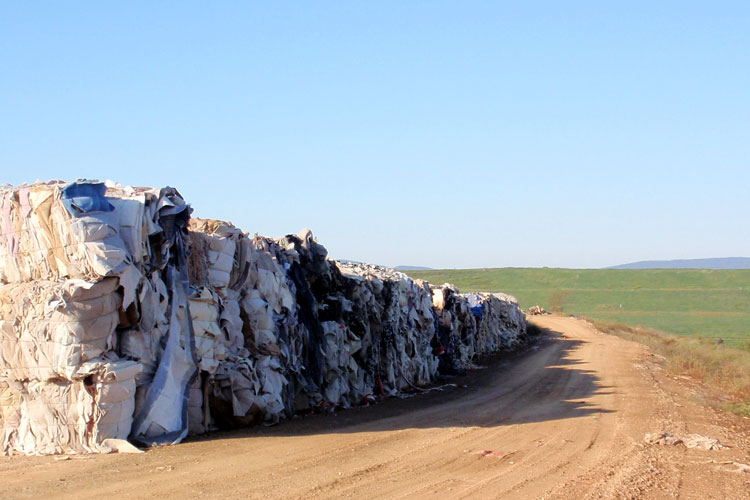
In mixed waste recycling systems, recyclables and non-recyclables are both disposed of in the same bin. The recyclable materials are then separated out, cleaned, and sorted. Photo courtesy of Aquafil
In a mixed waste recycling system all consumer waste—both recyclable and non-recyclable—is disposed of in the same receptacle. The mixed waste is then collected and transported to a central sorting facility where the desired recyclates are then separated out, cleaned, and sorted.
Mixed waste recycling is extremely convenient for businesses and consumers, but requires the most amount of post-collection work and often produces a high volume of soiled recyclable waste (especially paper products) that cannot be reused. It is for this reason that mixed waste recycling is often discouraged in favor of other recycling systems, though it remains the dominant mode of recycling in many developing countries that lack the necessary infrastructure for larger-scale recycling programs.
Commingled Recycling
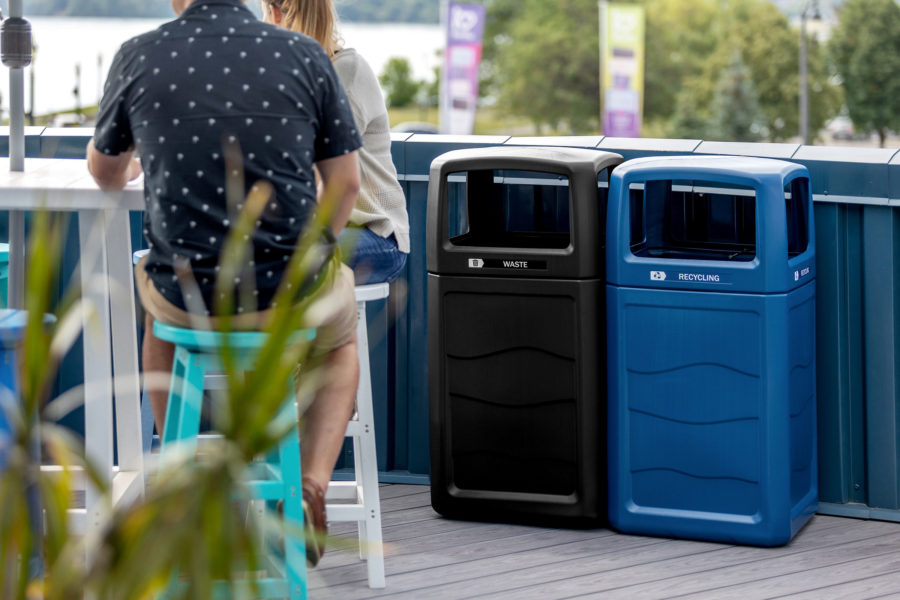
Renegade Bins are a new single stream, durable, and cost-effective container option with high capacity for waste and recycling collection. Photo courtesy of Busch Systems
Also called single-stream recycling, commingled recycling refers to the practice of mixing all recyclables with one another while keeping them separate from non-recyclable waste. Upon collection, the commingled recyclates are transported to a materials recovery facility (MRF) for sorting, which may be done by hand, via automated equipment, or some combination of the two.
It is during sorting that recyclates are separated into their respective categories and any non-recyclable contaminants are removed. On paper, preventing contamination in commingled recycling systems seems like it should be incredibly simple; in reality, however, it can be surprisingly difficult, as it hinges entirely on user choices and awareness.
Before a user can even make the conscious decision to recycle, they first have to recognize that there are separate receptacles for trash and recyclables. That’s why companies like Busch Systems follow best practices for making recycling easier on users, employing design strategies like visual prompts, restrictive lids, and prominent signage.
“It’s not just how to collect trash and make it go away as efficiently as possible. You want to create the infrastructure that intuitively guides users to use the bin you want them to use,” Cooley says. One way to help guide users to the correct bin is by color-coding; and while there is no official color standard utilized across North America, blue has largely come to symbolize recycling, whereas trash is typically represented as black or gray.
Color-coding can help users differentiate between trash and recycling, but it doesn’t tell them what counts as a recyclate. To help prevent contamination, it is imperative that recycling programs provide the public with educational materials detailing what waste products can be recycled, as well as clearly label all bins and receptacles used for collection. The very nature of commingled recycling, however, means that, like mixed waste systems, paper products have a high probability of becoming contaminated by other recyclates.
Dual Stream Recycling
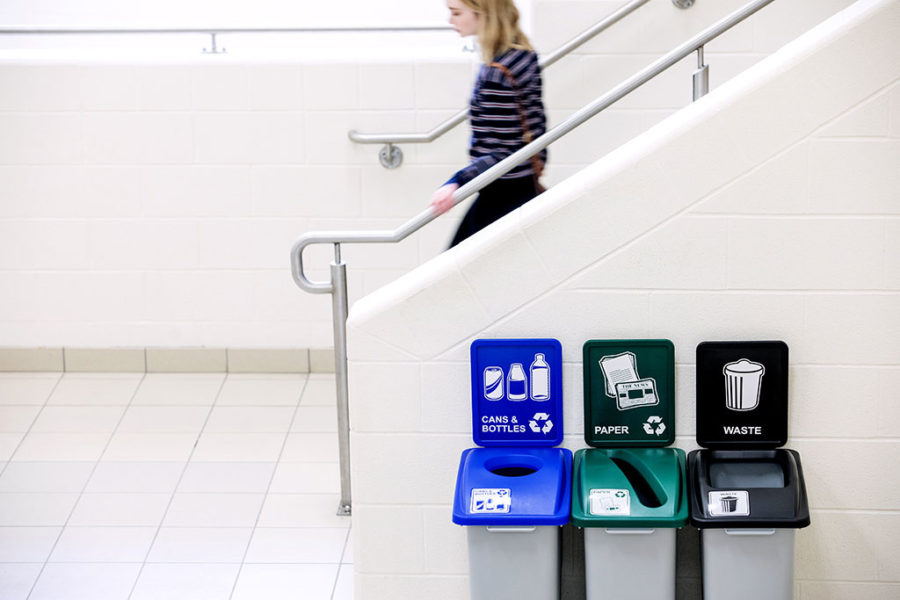
Dual stream recycling systems help ensure higher quality recyclates by separating paper products from other recyclable materials. Photo courtesy of Busch Systems
Dual stream recycling typically refers to the practice of separating mixed paper products from glass, cans, plastics, and other commingled recyclates. Placing paper and cardboard in a separate bin before collection reduces the amount of post-collection sorting required and ultimately helps ensure that all recyclates remain contaminant-free, increasing the likelihood of their being recycled into new products.
Once collected, the fibrous paper products are often sold or sent off to market with little additional processing, while the remaining recyclates are transported to a MRF for sorting.
Certain counties and recycling centers utilize a different form of the dual stream recycling system wherein all recyclable materials except glass—as opposed to paper products—are collected in the same receptacle. This ultimately helps prevent glass shards and glass dust from contaminating other recyclates, improving overall scrap material quality.
Source Separation
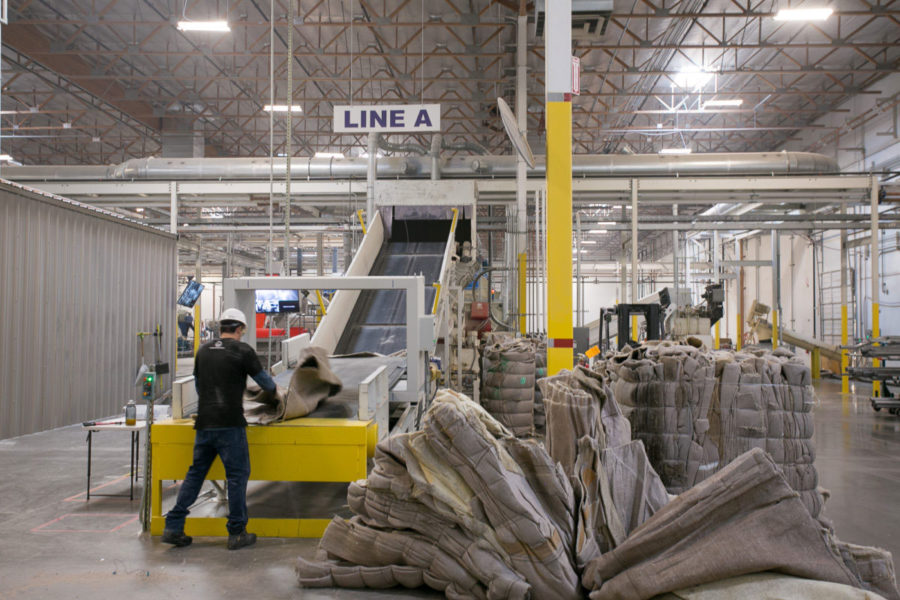
In multi-stream recycling systems, each type of recyclate is sorted before collection instead of being mixed with other recyclable materials. In the photo above, carpets are being recycled at the Aquafil Carpet Recycling plant in Phoenix, Arizona. Photo courtesy of Aquafil
Source separation or multi-stream recycling systems are the complete opposite of commingled recycling systems in that each recyclable material is sorted before collection. Source separation may be practiced as curbside collection, though it also commonly manifests in the form of buy-back centers—or places where sorted recyclates may be exchanged for money—and drop-off centers.
Multi-stream recycling greatly reduces the need for post-collection sorting and typically generates the purest recyclates, though it can be extremely difficult to actually practice, as it has the highest potential for contamination, especially when bins are collected as part of a curbside collection program.
Where commingled systems only require users to choose between two bins, source separation recycling requires users to correctly choose between multiple bins. When users choose incorrectly or if they mistake a recycling bin for a waste receptacle, the contaminants must be cleared out and the recyclables cleaned for them to be fit for reuse—a process that sometimes isn’t worth the labor, time, and energy.
“The effort to pull out items that don’t belong in recycling increases the cost and can have more of an impact on the environment than if it simply went to the landfill,” Cooley says. This is another area where critically thinking about receptacle design can make all the difference between a failed and successful recycling program. Restrictive openings, for example, can help clearly indicate what materials belong in the bin and require the user pause and think about what they’re discarding.
“You don’t want an opening that is wide so someone can casually discard without paying attention. You want it to be more restrictive so it forces them to focus attention on what they’re doing,” says Cooley. “Restrictive openings improve the percentage of those who recycle and sort correctly.” Bins designed for paper and cardboard, for example, might feature a thin slot rather than a round hole, as this more clearly communicates which recyclate it is intended to collect and actively prevents the incorrect material from being inserted.
Color-coding can also be useful in commingled recycling systems, especially for recycling centers and programs that require glass be sorted by color.

